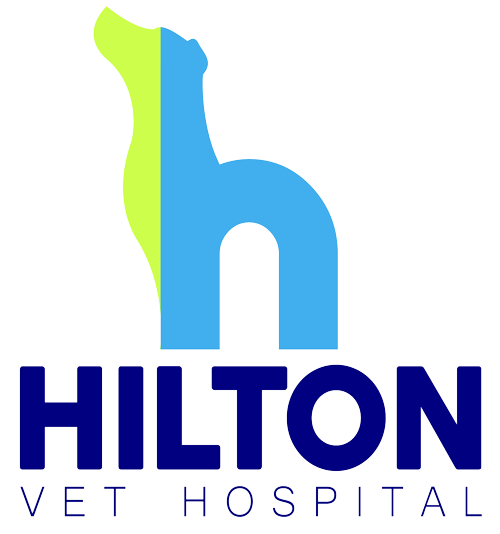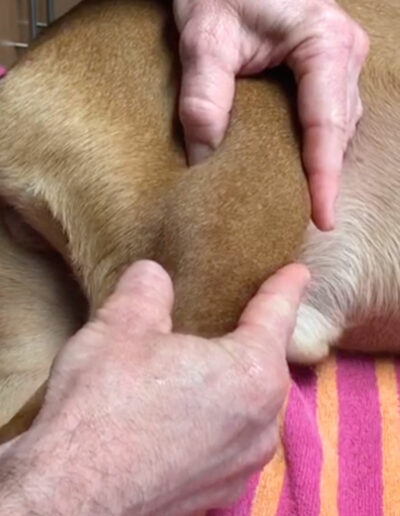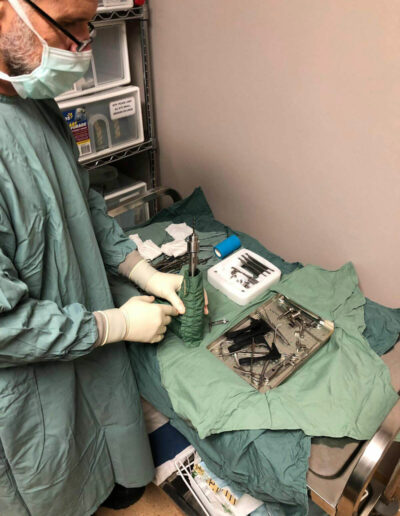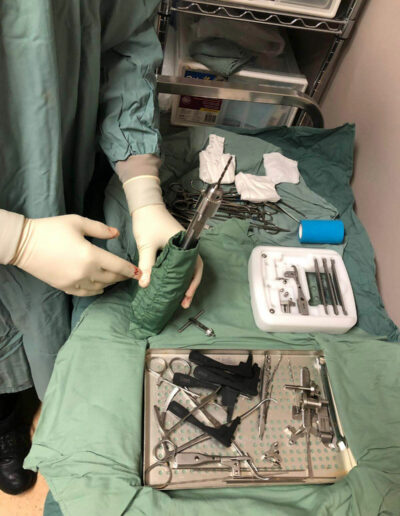Cruciate Ligament Surgery For Dogs
Your Dog’s Health In The Hands Of Over 35 Years Of Surgery Experience.
Bruce’s experience with us
Like Bruce, there are many dogs who experience a torn cruciate ligament. This causes significant instability in the affected rear leg to the point that no pressure can be placed on it. Like Bruce, many dogs have come to Hilton Vet Hospital and have regained athletic ability after treatment and rehabilitation. Here are a few clips to show Bruce’s progress. Within just one week Bruce was up and about with just a small limp.
Free second opinion consult.
This free consultation is with one of our surgeons to answer any questions. You will also receive an obligation-free estimate.
Meet the Surgeons

Dr. Dario

Dr. Heinrich
Cruciate Ligament Surgery For Dogs
Call Hilton Vet Hospital
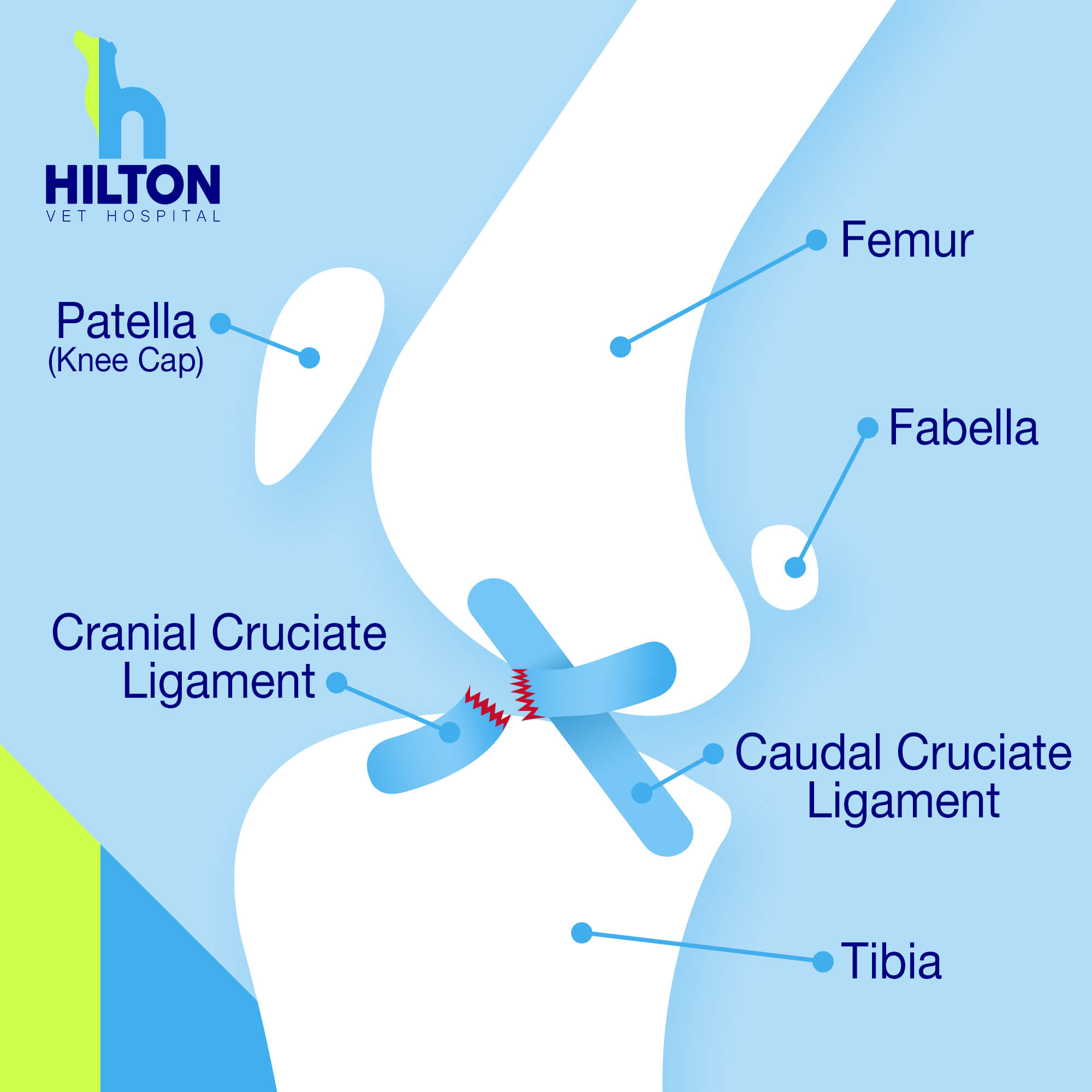
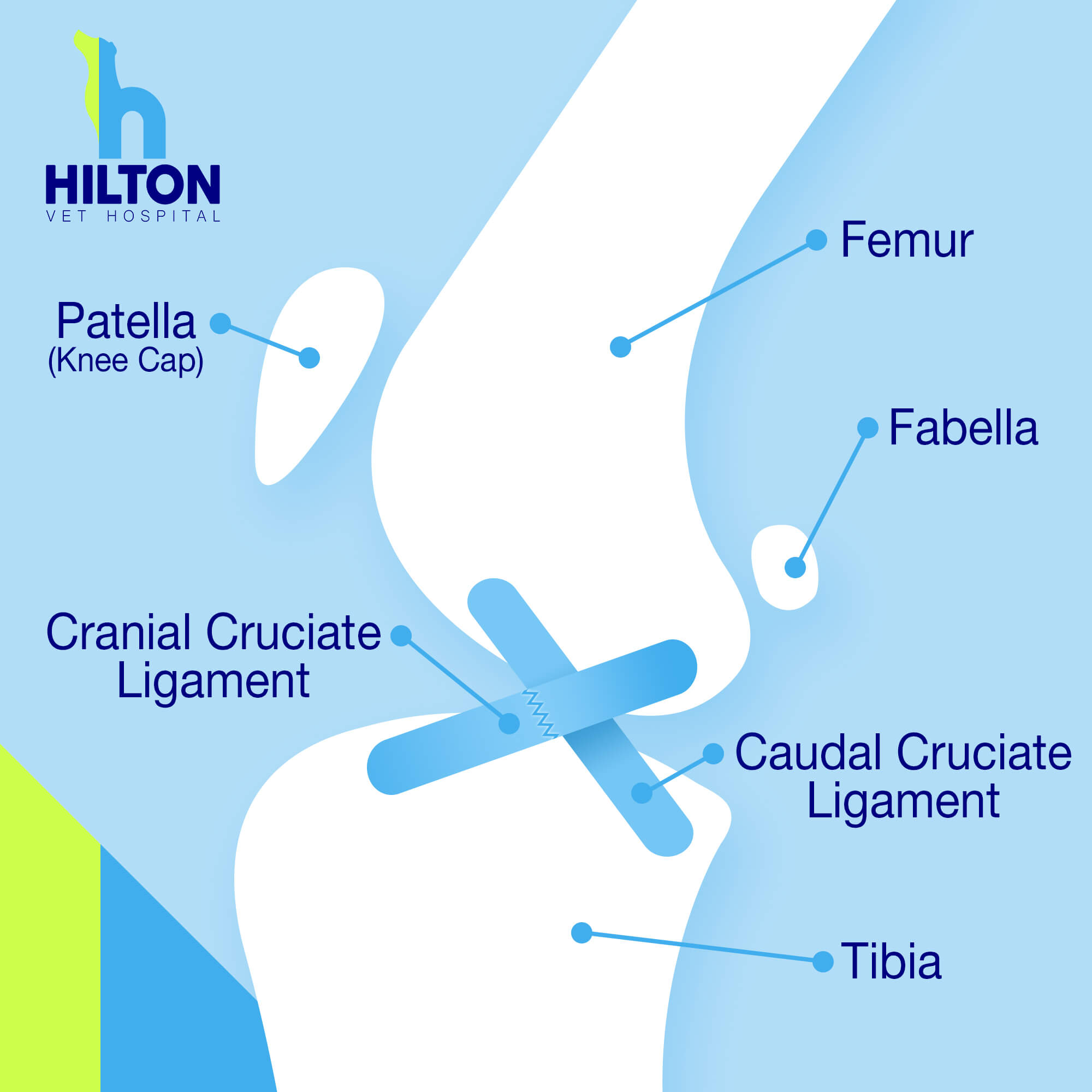
Common Ruptured Cruciate Ligament Symptoms In Dogs
If any of the following are evident in your dog please call us immediately.
– Acute or chronic onset of hindleg limping.
– Favouring the use of one leg over the other.
– Holding the injured leg up with only toes touching the ground.
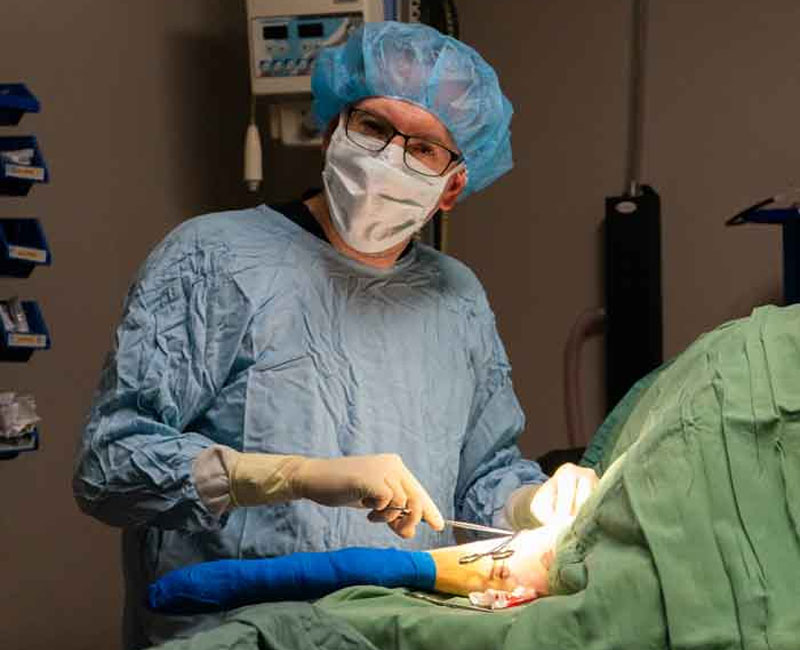
How A Cruciate Rupture Happens
Not only can this be more challenging for us to diagnose, but, as you can imagine, it’s also quite painful and not a lot of fun for your dog!
Cruciate ligament injuries in dogs are the most common cause of hind limb lameness in dogs, and the bigger the pup, the bigger the issue. For dogs, recoveries without surgery are rare, and delaying surgery often leads to increased cartilage damage.
If your dog appears to struggle when applying weight to one of its hind legs, then it might be experiencing ligament degeneration or rupture. If so, don’t delay! Contact us immediately using the form below to book an urgent consultation.
What is Cruciate Ligament Surgery?
There are two types of surgeries to fix a ruptured cruciate ligament. An examination by one of our surgeons is required to identify which one is best for your dog.
Pre-surgery Consultation
We will have a consultation in which the vet will look for signs of a ruptured cruciate ligament to make a definite diagnosis.
Sometimes it will be necessary to sedate the patient to feel for a ruptured ligament along with x-rays.
During this consultation, the vet will explain in detail what the exact diagnosis is and what procedure will be best to repair the ruptured cruciate ligament.
Modified Maquet Procedure (MMP) for large dogs
This procedure involves making an incision into the bone and implanting a titanium wedge to change the biomechanics of the knee.
MMP is suitable for dogs between 10kg and 100kg. This technique allows for a very quick recovery. MMP is a great technique to provide good stability to the knee.
Latero Fabelo Suture Technique (LFS) for small dogs
This procedure makes use of a strong nylon suture to stabilise the injured knee. It is less complicated than the MMP and very cost-effective.
It is suitable for small dogs up to 20kg. Recovery time is longer compared to MMP.
The Cruciate Ligament Surgery Procedure In More Detail
Your pet needs to come to the Hilton Vet Hospital on the appointed morning being fasted for 12 hours.
An intravenous fluid drip is placed to keep the blood pressure stable and make sure your pet wakes up feeling fully hydrated.
Your pet will receive triple pain relief to make sure all pain is under control.
Your pet might go home with an Elizabethan collar, to prevent her from licking the wound.
What to expect after your dog’s Cruciate Ligament Surgery
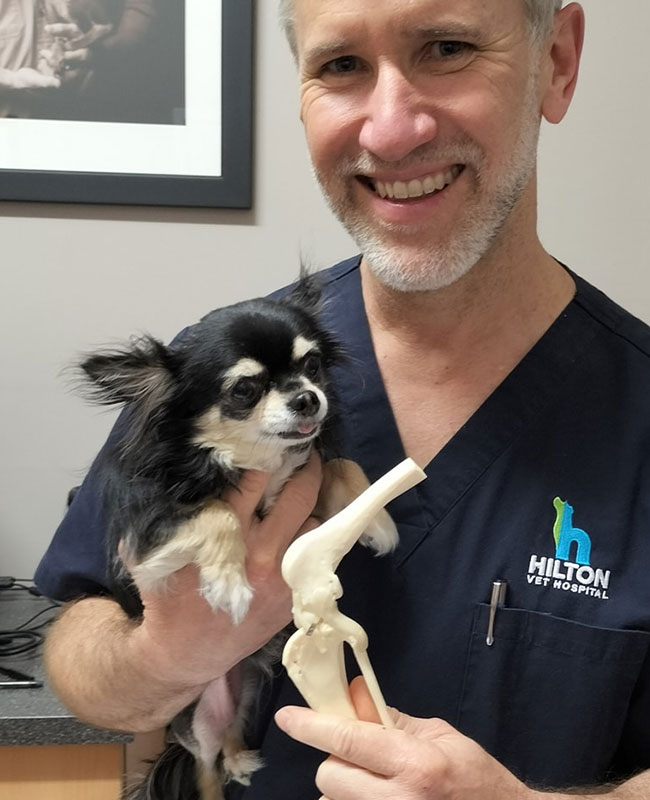
- Your pet will go home at the end of the surgery day.
- Your vet will go through the required aftercare with you during the discharge consultation.
- The first two days might be challenging for your dog as she has to deal with possible
- discomfort. You may need to assist your dog in going outside to the toilet.
- Your pet will soon regain strength and be able to start using the leg within a week.
- By the second week, the stitches are ready to be removed.
- From here on, the patient will remain on anti-inflammatories for another two weeks or until your dog can walk comfortably.
This is an overview of what most of our patients experience and we will always ensure that your dog receives the care it requires.
Success Stories
Here are two recent cruciate ligament surgeries that we have completed for Bruce and Keisha.
Bruce’s Cruciate Surgery Journey
Like Bruce, there are many dogs who experience a torn cruciate ligament. This causes significant instability in the affected rear leg to the point that no pressure can be placed on it. Like Bruce, many dogs have come to Hilton Vet Hospital and have regained athletic ability after treatment and rehabilitation. Here are a few clips to show Bruce’s progress. Within just one week Bruce was up and about with just a small limp.
Keisha’s Cruciate Surgery
Keisha is a lovely 9-year-old Golden Retriever who needed Cruciate Surgery. After examination, the MMP Cruciate Surgery was the best choice and as you can see the recovery was fantastic! Hilton Vet Hospital sees great results for Cruciate Ligament Surgeries in Perth.
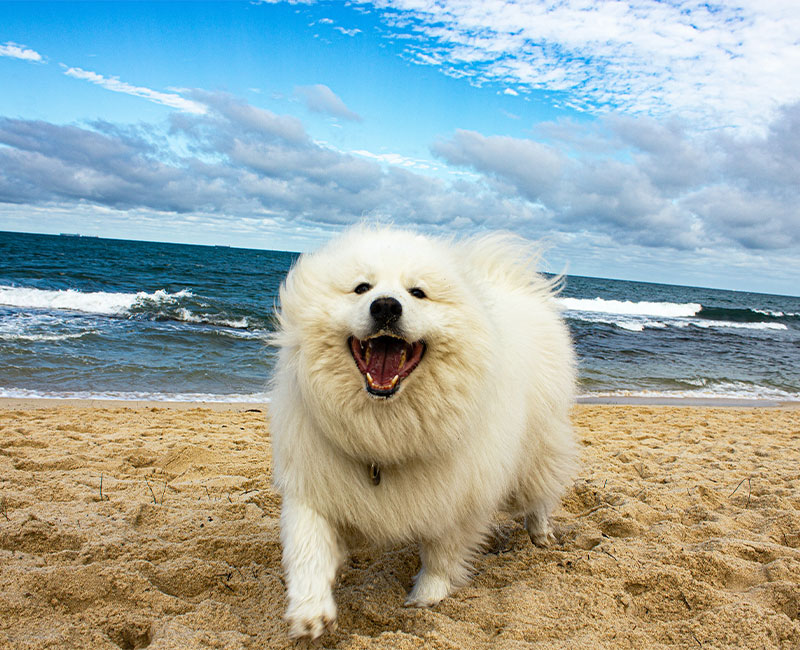
Frequently Asked Questions About Cruciate Ligament Surgery For Dogs
Your Title Goes Here
Can Senior Dogs Have Cruciate Ligament Surgery?
What Are The Risks Involved With Cruciate Ligament Surgery For My Dog?
Complications like infections, swelling or injury of the surgery site are rare but can happen. We complete the surgery in sterile conditions and provide excellent aftercare information to minimize the risk of these complications.
Is General Anaesthetic Necessary?
What If I Don't Go Ahead With The Surgery?
How long Until My Dog Recovers From Cruciate Ligament Surgery?
For any questions about Cruciate Ligament Surgery for your dog, please give us a call.
Pet owners from all over Fremantle, Hilton, Hamilton Hill, O’Connor, White Gum Valley, Beaconsfield, Willagee, Samson, Coolbellup, Kardinya, Spearwood and Coogee have been coming to Hilton Vet Hospital for more than 30 years to receive exceptional service and care for their pets.
